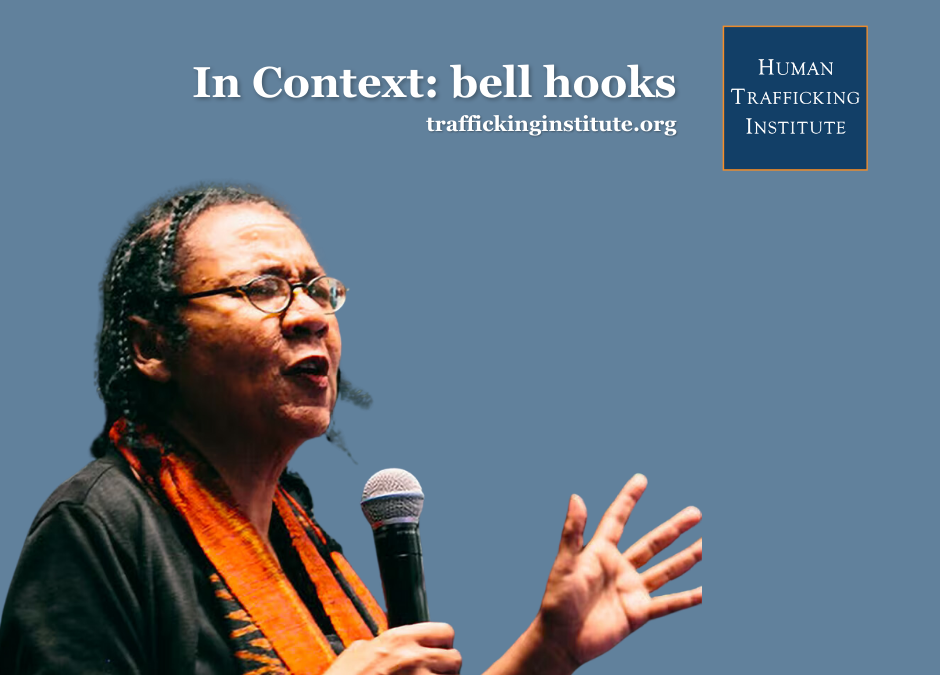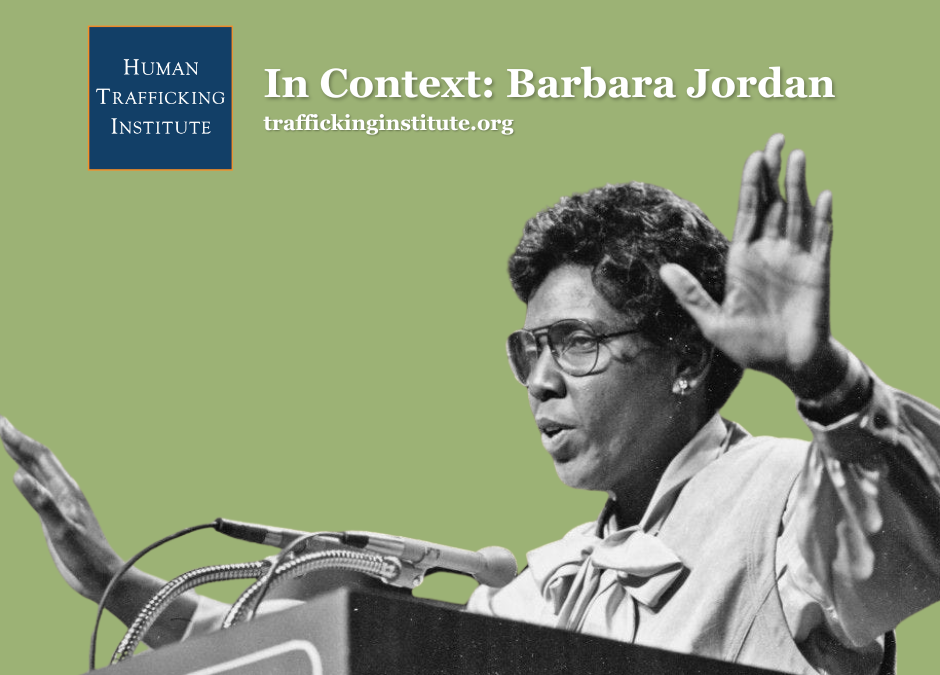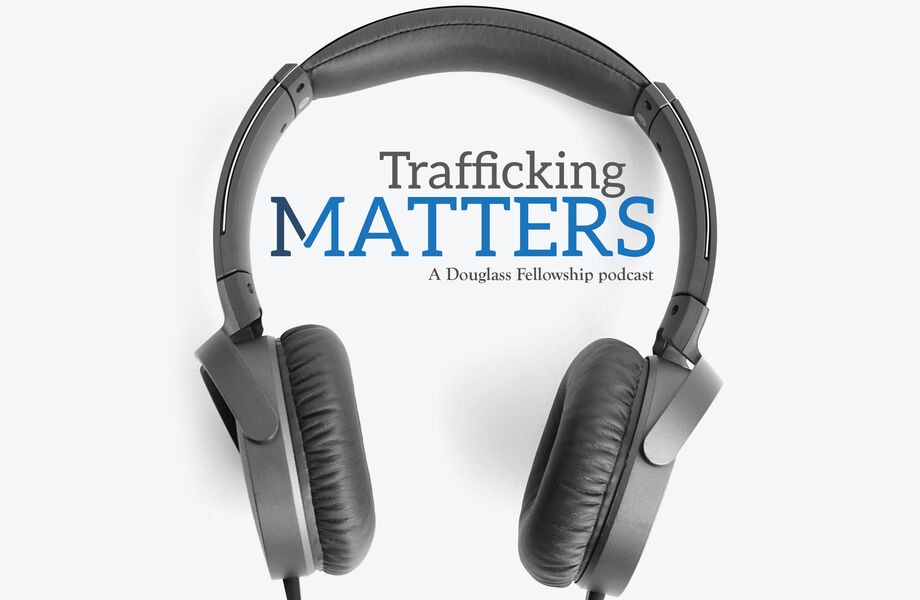Edited by: CASSONDRA (Cj) MURPHY and ALYSSA CURRIER
A hallmark of human trafficking cases is the complex, long-term trauma victims experience during their exploitation. As such, victims often suffer severe psychological and memory challenges that can impact their interactions with anti-trafficking professionals. Given the importance of obtaining the most comprehensive, accurate information from victims—whether for investigation, prosecution, civil litigation, or victim support services—the cognitive interview is a beneficial tool for anti-trafficking work.
The cognitive interview was developed to improve victim and witness memory, particularly when recalling a traumatic event, but is also designed to facilitate a victim’s well being1 Accordingly, the cognitive interview is consistent with the anti-trafficking community’s efforts to employ victim-centered practices. While the interview style was developed to facilitate maximum recall of a single traumatic event, the underlying principles can be applied to lengthier exploitation or employed more traditionally to assist victims in recalling a particular event during their exploitation.
The cognitive interview is broken down into the following steps: (1) An introduction and rapport building phase where the interviewer explains the process and the expectations of the victim; (2) a formal control shift where the interviewer conveys the non-traditional, victim-controlled process; (3) an explanation of the need for the victim to recount every detail; (4) an open narration period where the victim is encouraged to tell his or her story in its entirety, without any interruptions; (5) guided follow-up questions where the interviewer pursues additional details, utilizing specific memory principles to assist the victim in his or her recall; (6) a period of review and clarification; and (7) a closing phase where the interviewer actively secures follow-up contact.2
Adapted from an investigative interviewing manual published by cognitive interview experts in 2014, the following guide provides a summary of the process for anti-trafficking professionals seeking to employ cognitive interview techniques:
Introduction

During the introductory phase, the interviewer should explain the process of the cognitive interview, highlight the victim-centered nature of the interview style, and emphasize the need for proactive participation from the victim. The interviewer should strive to spend as much time as possible building rapport with the victim prior to transitioning into the information-gathering portions of the interview.3
Control Shift
One of the most unique aspects of the cognitive interview is that the victim is encouraged to control and direct the interview. In most interview scenarios, control most naturally defaults to the interviewer. Therefore, the interviewer must actively transfer this control to the victim by emphasizing the necessity of the victim’s role. This is generally accomplished by telling the victim that he or she was present during the event, and you (the interviewer) were not, so you will be relying on the victim to do the majority of the talking and proactively bring up information without waiting for a specific question to be asked.4 A good rule of thumb is to follow the “80-20” principle, which suggests the victim should be talking for approximately 80 percent of the interview in order to facilitate the optimal amount of information gathering.5
Detail Emphasis
Victims and witnesses tend to highlight the information they perceive as most critical to the interviewer’s purpose. However, the victim may not realize that a seemingly trivial detail can be significant from the interviewer’s perspective and may serve as a springboard to recalling other information, since unexpected details can trigger memory activation. To facilitate this, the interviewer should stress the importance of recounting every possible detail. Additionally, the interviewer should encourage the victim to provide information as it comes to his or her mind, even if it’s out of order or inconsistent with information previously provided. Furthermore, the interviewer should be sure to explain that the victim should always tell the interviewer when he or she does not know or is unsure of a detail. To emphasize the concentration and effort required to recall and share every detail, the interviewer should express appreciation in advance for the significant mental (and likely emotional) energy that this process will require.6
Uninterrupted Narrative

The mainstay of the cognitive interview is the open narration period. In contrast to traditional, rapid-series question and answer interviewing, the open narration style is more conducive to recalling details of traumatic events. To best facilitate the victim’s memory, the interviewer should guide the victim back to the scene of the event and ask him or her to “mentally recreate” the circumstances, both external and internal, that were present at that time. Once there, the interviewer should ask the victim to tell the interviewer what happened—in the victim’s own words—from beginning to end. It is absolutely essential that the interviewer refrain from interrupting the victim during his or her open narration phase; this can be challenging and counterintuitive for interviewers, but it is a critical component of obtaining the memory retrieval benefits of this interview style. To minimize cognitive overload, it can be beneficial for victims to close their eyes during parts, or all, of the open narration portion. However, this may or may not be feasible (or advisable) if the victim has not developed a sufficiently trusting relationship with the interviewer. The interviewer’s main task during this time is to listen actively, but he or she should take brief notes to facilitate follow-up questions.7
Follow-up Questions
After listening to the uninterrupted narrative, the interviewer should transition to asking follow-up questions with three main principles in mind:
-
- Detail – The interviewer should start with the event/scene/interaction that appears most easily recalled by the victim based on the details provided during the open narrative portion.
- Momentum – The interviewer should ask all the questions describing a particular event/scene/interaction at the same time, and then move onto the next area. The interviewer should refrain from jumping around, and reserve questions for the scene in which the information was most logically perceived.
- Varied Recall – The interviewer should ask the victim to employ different physical or conceptual perspectives on the event. Since there are a several different “access routes” to memories, having the victim reconsider the event from a different physical perspective or through the eyes of another individual present can prompt new recollections.8 Additionally, it can be helpful to have the victim recall the event in the reverse order—however, some research suggests this can “disrupt the temporal clustering” of the victim’s memory. Therefore, if used, this technique should be saved until the end of the narrative and follow-up questioning.9
Review & Clarification

After completing the questioning, the interviewer should review all the information with the victim to confirm its accuracy, attempt to clarify any inconsistencies, and ask the victim to add any additional information he or she recalls. The interviewer should be careful to address inconsistencies in a non-interrogative, non-accusatory manner.10 While this is mostly achieved by adopting a non-judgmental, supportive tone, the interviewer should also emphasize the clarification rather than the inconsistency (i.e., “Just to clarify, you recall [new statement number] people in the room, not [previous statement number] people in the room” instead of “That’s not what you said earlier…”).
Closing
The interviewer should close the interview by thanking the victim and “extending the life of the interview.” The victim is likely to remember additional details in the coming days, and the interviewer should emphasize that when—not if—the victim recalls additional information, he or she should reach out to the interviewer. Alternatively, the interviewer can tell the victim that he or she will be following up in a few days to see if the victim remembers anything else.11
Given the significant memory and emotional challenges victims face in recalling details of their abuse, employing cognitive interview techniques may benefit anti-trafficking professionals by eliciting more comprehensive information from victims. Additionally, the interview process itself is victim-centered, victim-directed, and more conducive to a victim’s wellbeing and empowerment during the interview process.
- 1 R. Edward Geiselman & Ronald P. Fisher, The Cognitive Interview Method of Conducting Police Interviews: Eliciting Extensive Information and Promoting Therapeutic Jurisprudence. 33 International Journal of Law and Psychiatry, 321 (2010).
- 2 R. Edward Geiselman & Ronald P. Fisher, Interviewing Victims and Witnesses, Investigative Interviewing: Handbook of Best Practices (online excerpt), 2014.
- 3 Id.
- 4 Id.
- 5 Id. (citing Snook, B., Keating K., A Field Study of Adult Witness Interviewing Practices in a Canadian Police Organization, 16 Legal and Criminological Psychology, 160 (2010)).
- 6 R. Edward Geiselman & Ronald P. Fisher, Interviewing Victims and Witnesses, Investigative Interviewing: Handbook of Best Practices (online excerpt), 2014.
- 7 Id.
- 8 Id.
- 9 Id. (citing Dando, C., Ormerod, T., Wilcock, R. & Milne, R., When Help Becomes Hinderance: Unexpected Errors of Omission and Commission in Eyewitness Memory Resulting from Change [in] Temporal Order at Retrieval? 121 Cognition, 416 (2011)).
- 10 R. Edward Geiselman & Ronald P. Fisher, Interviewing Victims and Witnesses, Investigative Interviewing: Handbook of Best Practices (online excerpt), 2014.
- 11 Id.




